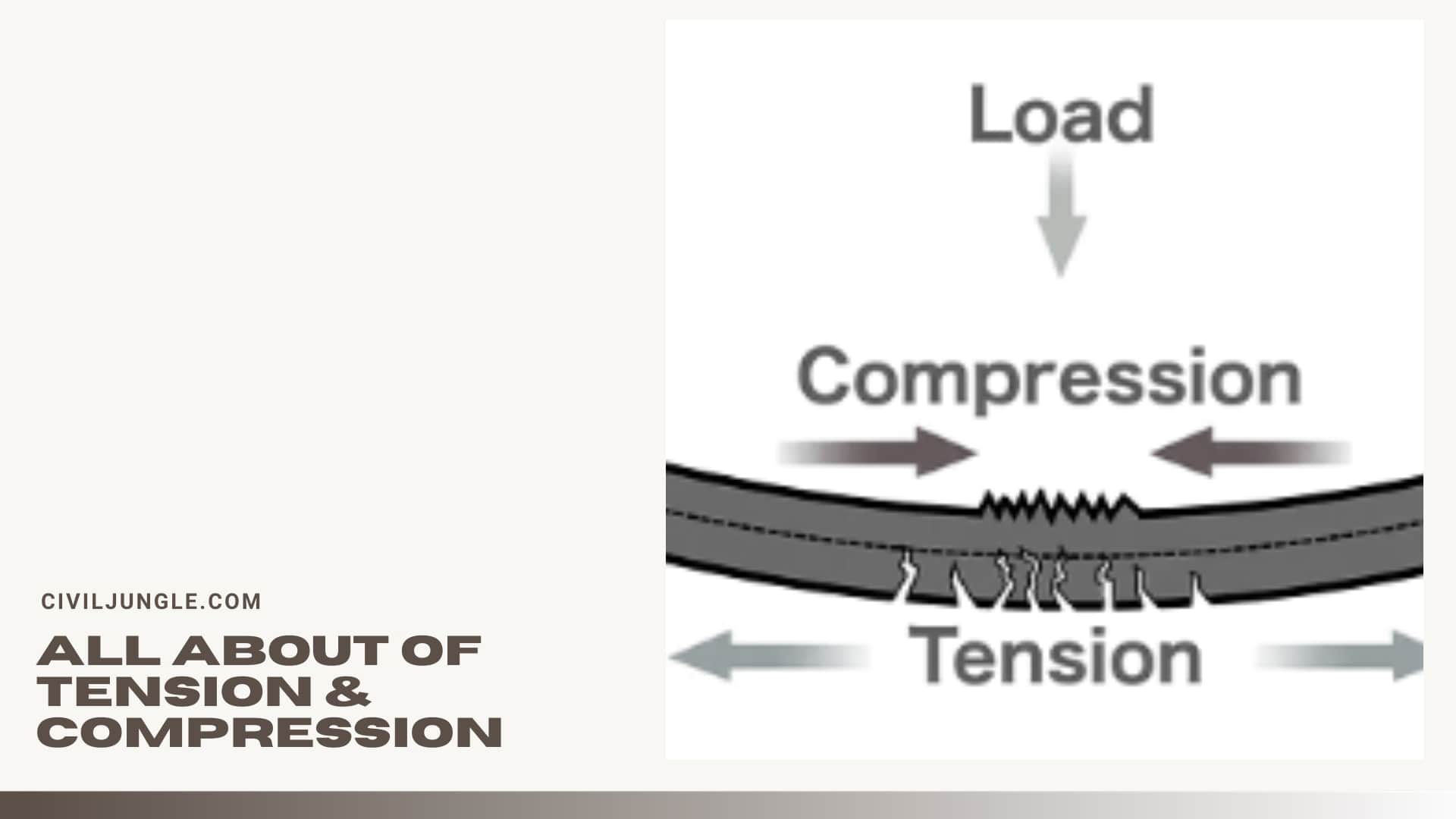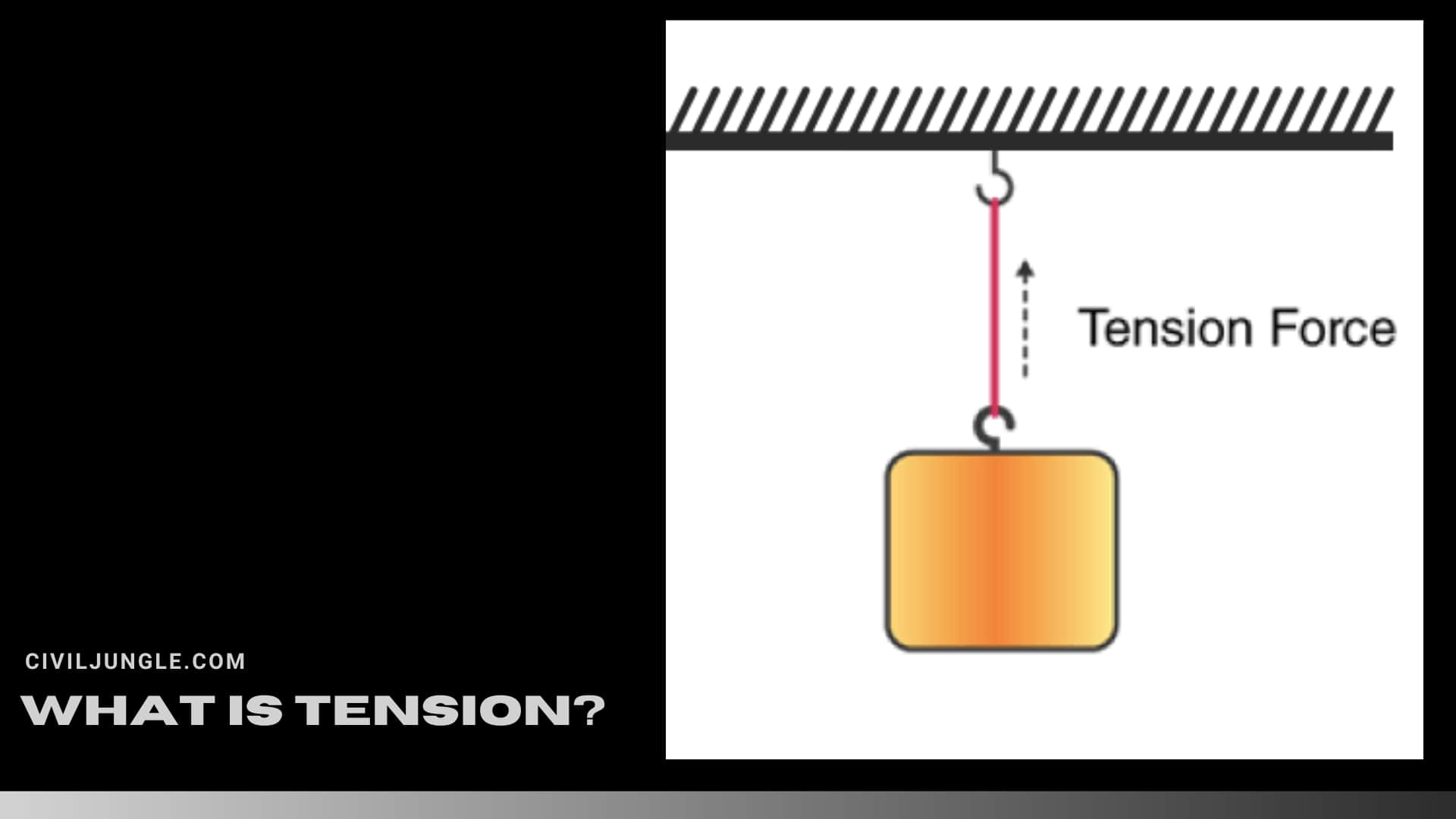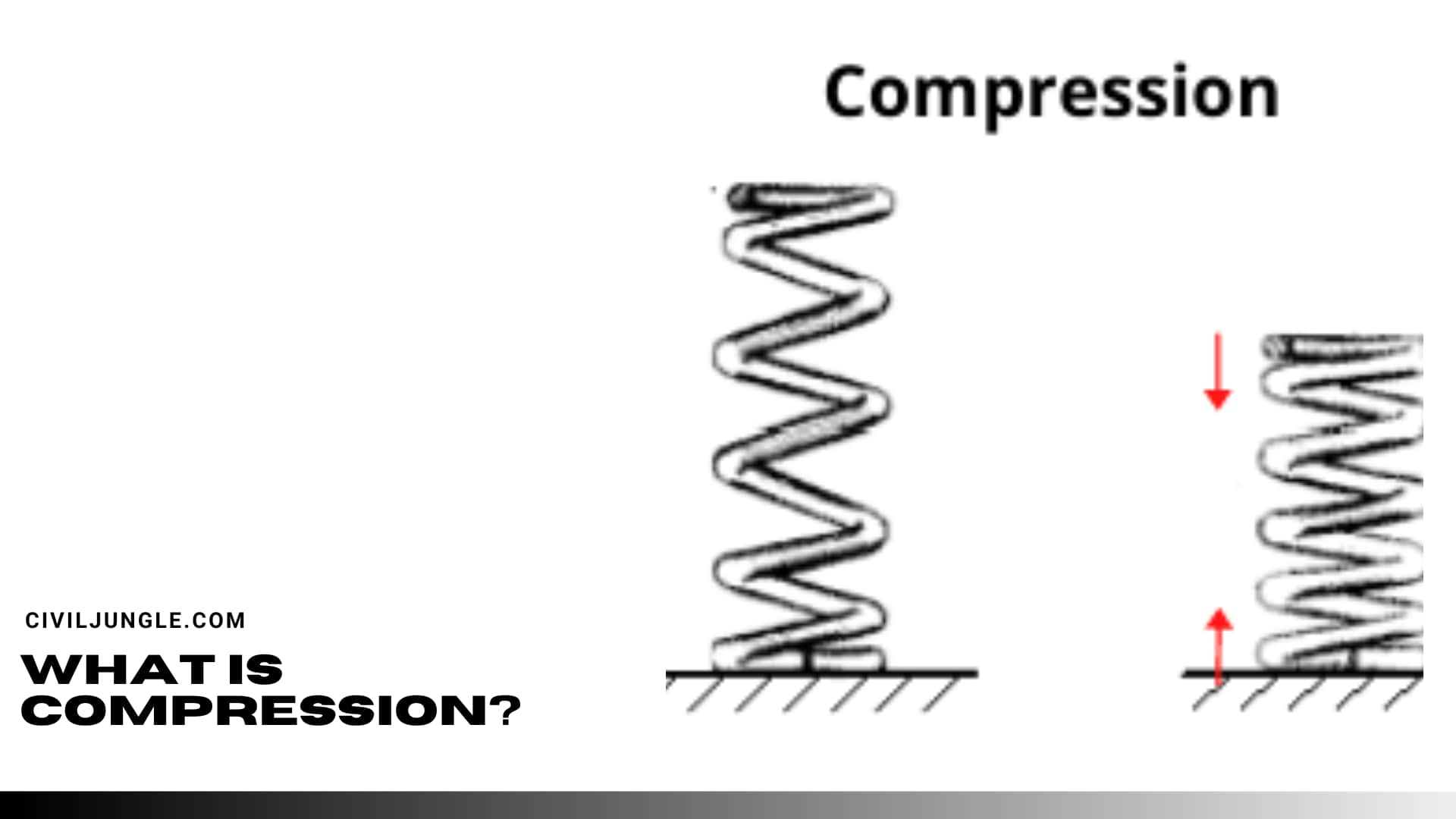What Is Tension?
Important Point
Tension, or as some might define tension, originates from a Latin word meaning “to stretch.” It’s a testing part of the force, like one type of pull force.
Testing part of the force, Like one type of pull force. All physical objects that are in contact may exert forces on each other.
This contact forces different names based on these types of objects in contact.
Where one of the objects exerting the force happens to be a rope, string, chain, or cable we call the force tensions
Also, read: What is Plum Concrete | Application | Mix Design | Methodology
What Is the Tension Force Equal To?
This system has a constant velocity, and there is an equilibrium because the tension in the cable, which is pulling up the object, is equal to the weight force, i.e., mg.
Where M is a mass, and g is the acceleration caused by gravity, which is pulling down the object.
The Formula of Tension.
T = Mg
M = Mass/ Weight kg
g = gravitational force.
Example of Tension Force.
Where you pull on an object with a rope, the rope will stretch slightly.
This stretch in the cable can cause the cable to be taut, which allows the cable to transfer a force from one side of the cable to the other, roughly similar to how a stretched spring will pull on objects connected to it.
This stretch of the cable is usually too small to notice, therefore we typically ignore the small stretch that occurs in cables, ropes, and wires.
However, if the forces involved are also great, the large amount of stretch may cause the rope to break. So it is advisable to check the tension limit for any cable or ropes you plan on using.
Also, read: Difference Between Mortar and Concrete | What Is Mortar & Concrete | Type of Mortar & Concrete
Useful Article for You
- What Is a Contour Interval
- What Is Tile
- What Is the Difference Between a Shower Pan and a Shower Base?
- What Is a Window Panel
- Type of Arch
- What Is a Frame Structure
- Forces Acting on Dam
- What Is the Measurement for a Queen Size Bed
- What Is Considered Livable Space
- What Is One Way You Can Save Electricity?
- What Is Mdf Mean
- What Is a Bundle of Shingles
- What Is a Gallon of Water Weigh
- What Is SuperelevationWhat Is Overhang
- What Is Sand Blasting
- What Is a Span Bridge
- What Is the Little Black Diamond on a Tape Measure
- What Is a Louvered Door
- What Is a Spread Footing
- What Is Leveling
- Different Types of Beam
- What Is Pedestal
- What Is Plumbing Fixtures
- What Is Slab Construction
- What Is Calacatta Quartz
- What Is Auxiliary View
- Footing Vs Pier
- Sheepsfoot Roller
- Live Load Vs Dead Load
- What Is 1 Flight of Stairs
- What Is Refractory Cement
- Dry Pack Concrete
- What Is Luminous Flux Vs Lumens
- What Is a Frost Wall
- What Is an Undercoat
- What Is Road Pavement
- Arch Foundation
- What Is a Stair Landing
- What Is Stone Masonry
- What Is a Spandrel Beam
- What Is Pier and Beam Foundation
- What Is Levelling
- What Is a Pile Cap
- What Is a Mat Foundation
- What Is a Floating Slab
- What Is the Purpose of Foundation
- What Is Modulus of Rupture
- What Is a Flush Door
- What Is Residential Construction
- What Is a Concept Sketch
- What Is the Best Foundation for a House
- What Is Oblique Drawing
- What Is a Benchmark in Surveying
- What Is a Engineering Drawing
- What Is an Admixture
- What Is a Monolithic Slab Foundation
- What Is the Standard Size Water Supply Line
- What Is a Caisson in Construction
- What Is a Tremie
- What Is Tributary Area
- What Is Shoring Construction
- What Is a Cason
- What Is Wall Putty
- What Is the Difference Between Mortar and Concrete
- What Is Bhk
- What Is Sbc of Soil
- What Is Plinth Level
- What Is Water Proofing
- What Is Mix Design of Concrete
- What Is Fine Aggregate
- What Is Retention Money
- What Is Design Mix
- What Is Isometric Scale
- What Is Development Length
- What Is Superelevation
- What Is Wall Made Of
- What Is Structural Analysis in Reading
- What Is a Pony Wall
What Is Compression?
The compression definition is that it is the force generated from compressing an object or substance.
When we talk about compression and tension, we refer to forces that either squeeze or pull materials.
When shearing forces are aligned into each other, they are called compression forces.
The definition of compression force is that it’s used to power everything from compression brakes to hand tools.
There are various compression examples in our daily life, like pressing a sponge or stepping on a can.
The compressive strength of materials and structures is an important engineering consideration.
The compression definition physics describes it as a force that can be visualized by placing an object on a spring.
It’s essential to understand what is compression force in various engineering and physics applications. When the spring is compressed and then released, the object is ejected into the air.
This is a result of the compression force that is generated from compressing the spring.
What Is the compression Force Equal To?
The compression force is usually captured in Newton (N), defined as a unit of force that gives to a mass of one kilogram an acceleration of 1 meter per second squared (m/s2, commonly represented as “a”).
The Formula of Compression.
N = Ma
M = Mass/ Weight kg
A = Area.
Compression Force Examples
- Above figure shows another common visual example of compression force – the act of pressing two ends of a spring together.
- As compression force is applied to the spring, the spring’s physical shape becomes compacted.
- When the compression is released, the spring immediately expands outward and back to its normal shape.
Also, read: Concrete Mix Ratio | What Is Concrete Mix Ratio | Type of Concrete Mix Ratio
Useful Article for You
- Zero Force Members
- How Much Does a Yard of Concrete Weigh
- Cmu Wall Meaning
- Gradient Road
- Budget Sunroom Ideas
- What Is Gypsum Board
- Types of Vaulted Ceilings
- Well Points
- How Does Baking Soda Remove Blood from Carpet
- What Are Forms in Construction
- How Heavy Is Dirt
- Tender Meaning in Architecture
- Dark Olive Green House
- Cast in Place Concrete
- Lean to Roof
- How Tall Is an Average Door
- Grade Beam Foundation
- Window Sill Height
- Concrete Cold Joint
- Types of Traps
- Types of Pipe
- Wood Supporting Beams
- Finishing Plaster
- Home Depot Scrap Wood
- Lvl Beam Size Calculator
- Structural Shell
- Curb Types
- Msand
- Optimum Dry Meaning
- Disadvantages of Low-E Glass
- Bridge Abutment Definition
- Build Materials List
- Composite Masonry Wall
- Is Cedar a Hardwood or Softwood
- Modified Proctor Test
- Physical Properties of Sand
- Sugar in Concrete
- Crane Machine Construction
- Types of Gable Roofs
- Door Frame Types
- How Much Does 55 Gallons of Oil Weigh
- Dog Leg Stairs
- Concrete Salt Finish
- Westpoint Bridge Builders
- Types of Porches
- Hempcrete Disadvantages
- Roof Pitch Types
- Types of Weirs
- Asphalt Floor
- Dutch Roof
- #6 Rebar Weight Per Foot
- Prizmatic Compass
- Bond Break Concrete
- Poured Concrete Wall Cost Calculator
- How Many 60 Lb Bags of Concrete in a Yard
- Wood Fence Post Spacing Chart
- Falsework
- Design of Building Structures
- Topping Slab
- Types of Cinder Blocks
- Fresh Concrete
- Door Colors for Red Brick House
- Foundation Spalling
- Clear Cover Concrete
- Tiles Brand
- Cement Consumption in Plaster
- Aggregate Density Kg M3
- Load Bearing Wall Construction
- Weight of Concrete Slab Calculator
- Cyclonic Precipitation
- Curtain Names
Why Test For Compression Force?
From a design engineer’s perspective, there is a lot to be obtained out of quantifying how a device, product, or structure responds to compressive forces.
Compression force testing may yield important information in a variety of facets
#1. Material Selection:
In the case of material selection for product design, a compression force test may be used to help design engineers zero-in on the material optimized to withstand compressive environments.
#2. Competitive Benchmarking:
This Compression force tests may help design engineers improve the features of their product designs by capitalizing on competitor shortcomings.
#3. Meeting Internal or Third-Party Certification Standards:
Compression force tests may be integrated into certification processes like ISO, ASTM, and others.
Quality Testing:
Compression force tests may also be a last line of defense for products, where such a test will help identify potential product defects. The test can also be used to help identify if something in the manufacturing process has to be adjusted.
Also, read: What Is Cover in Concrete | Clear Cover in Beams, Slab, Column, Footing
Tension Vs. Compression
| Sr.No. | Tension | Compression |
| 1 | When discussing tension compression, it’s crucial to understand that a tension force is one that pulls materials apart, while compression squeezes them together. | A compression force is one that squeezes material together. |
| 2 | The force that tries to elongate a body or an object is called tension. | The force that tries to shorten the body or an object is called compression. |
| 3 | Effects of Force: The overall forces are pulling away from the object | Effects of Force: The forces acting upon it are directed toward the body |
| 4 | Related to object: Can be related to pulling on the ends of a rod | Related to object: Can be associated with pushing on the ends of a rod toward the middle |
| 5 | Method: A force promulgation method | Method: Can be used to the transference of force in the hydraulic system as pressure |
| 6 | Applicable: Only applied in solid strings | Applicable: Can be valid to any material |
| 7 | Position of Applied Force: Always outward from the object | Position of Applied Force: Always inward to the object |
| 8 | Considered as: Force | Considered as: It is a phenomenon |
| 9 | Examples: Ropes, the cable of crane, nails, threads, etc | Examples: Concrete pillars |
Compression Vs Tension
A tension force is one that pulls materials apart. A compression force is one that squeezes material together. For example, if you pull on a strong rope, it can support a large amount of tension. If you push on a rope, it cannot resist compression very well, and just bends.
What Is Tension and Compression?
A tension force is one that pulls materials apart. A compression force is one that squeezes material together. For example, if you pull on a strong rope, it can support a large amount of tension. If you push on a rope, it cannot resist compression very well, and just bends.
Compressive Force Example
Concrete is an example of a material that is strong in compression and weak in tension. This is why it is useful in walls, such as brick walls, where all the forces from the bricks, the upper floors and the roof act as compressive forces on the concrete bricks.
Tension Vs Compression Truss
When a member force points toward the joint it is attached to, the member is in compression. If that force points away from the joint it is attached to, the member is in tension.
Tension and Compression Force
The answer lies in how each bridge type deals with two important forces called compression and tension. Compression is a force that acts to compress or shorten the thing it is acting on. Tension is a force that acts to expand or lengthen the thing it is acting on.
What Is the Difference Between Tension and Compression?
A tension force is one that pulls materials apart. A compression force is one that squeezes material together. Some materials are better able to withstand compression, some are better able to resist tension, and others are good to use when both compression and tension are present.
Distinguish Between Tension and Compression.
Tension force tries to elongate the material. In contrast, compression attempts to shorten the body. In tension, all forces are pulling away from the object. In compression, the forces acting on the material push towards the body.
Like this post? Share it with your friends!
Suggested Read –
- Masonry Vs Brick
- What Is Singly Beam & Doubly Beam
- Rate Analysis of RCC (Reinforcement Cement Concrete)
- Difference Between Plinth Level, Sill Level, and Lintel Level.
- Difference Between CPM and PERT | What Is CPM & PERT
- Difference Between One Way Slab and Two Way Slab | What is Slab
- What Is Workability of Concrete | Factors Affecting Workability | Test |Errors




Leave a Reply